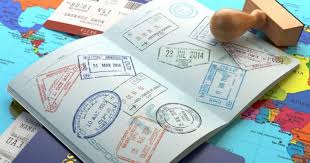Ready to explore with a Schengen Visa the charming streets of Paris, indulge in authentic pasta in Rome, or marvel at the historic architecture in Barcelona? Well, hold on to your hats because planning a trip to Europe just got a tad pricier! The recent increase in Schengen Visa fees is stirring up some buzz among travelers. Let’s dive into why these changes are happening and how they might affect your European adventures.
Schengen Visa
Dreaming of a European getaway? Then you’ve likely heard of the Schengen Visa, your golden ticket to exploring 26 countries hassle-free. This visa allows travelers to move freely within the Schengen Area for up to 90 days within a 180-day period. Whether you’re planning a romantic escape to Paris or an adventure in the Alps, having a Schengen Visa is essential for non-EU citizens.
The application process typically involves submitting various documents like flight itineraries, accommodation bookings, travel insurance, and proof of funds. Once approved, you can jet off on your European escapades without worrying about border checks at every turn. Just remember that each country might have its own unique requirements or restrictions despite being part of the Schengen Agreement.
So, before packing your bags and heading off on your Euro trip, make sure you’ve got all your visa ducks in a row!
Why the fees have been increased?
Have you heard about the recent increase in Schengen Visa fees? Many travelers are wondering why this change has been implemented. Well, the decision to raise the fees was primarily driven by various factors such as inflation, administrative costs, and the need for enhanced security measures.
As with any bureaucratic process, managing visa applications entails significant resources and manpower. The increased fees aim to cover these operational expenses more effectively. Additionally, the rise in living costs and economic pressures have also contributed to this adjustment.
Moreover, investing in advanced technology and infrastructure for visa processing requires substantial funding. By raising the fees, authorities can allocate resources towards improving services and ensuring a smoother application experience for travelers.
While no one enjoys paying more for travel expenses, understanding the rationale behind fee hikes can provide some clarity on why these adjustments are necessary.
What are the new fees and the difference from previous fees?
The Schengen Visa fees have recently undergone an increase, affecting travelers planning to visit Europe. The new fees vary depending on the type of visa applied for and the applicant’s age. For adults, the fee has increased from €60 to €80, while children between 6-12 years old now pay €40 instead of €35.
Furthermore, there are reduced fees for children under 6 years old who used to be exempt but now need to pay a fee of €0. Additionally, certain categories such as students and researchers may benefit from lower or waived fees in specific circumstances.
These changes in visa fees reflect adjustments made by the European Union to cover administrative costs and ensure efficient processing of applications. Travelers should take these updated fees into account when budgeting for their trips to Europe.
How will this impact travelers planning to visit Europe?
Travelers planning to visit Europe will now need to factor in the increased Schengen Visa fees into their budget. The rise in fees could potentially make European travel more expensive for tourists, especially those on a tight budget. This increase might prompt some travelers to reconsider or postpone their trips to Europe, while others may have to cut back on certain expenses during their travels.
The impact of the increased visa fees will vary depending on individual travel styles and financial situations. Some travelers might choose shorter stays or opt for less expensive accommodations and dining options to offset the higher visa costs. Others may explore alternative destinations outside of the Schengen area that offer similar cultural experiences but with lower entry requirements.
The new Schengen Visa fees are likely to influence how travelers plan and allocate their budgets when visiting Europe. It’s essential for tourists to be aware of these changes and adjust their travel plans accordingly to make the most out of their European adventures.
Tips for saving money while traveling in Europe
When traveling in Europe, saving money is key to making the most of your trip. One tip is to book flights and accommodations in advance to secure better deals. Consider using budget airlines or staying in hostels for a more economical experience.
Another way to save is by opting for local transportation options like trains or buses instead of expensive taxis. Take advantage of city passes or tourist cards that offer discounts on attractions and public transport.
Eating at local markets or affordable eateries can help cut down on food expenses while still enjoying delicious meals. Look out for free walking tours or discounted museum days to explore cities without breaking the bank.
Consider traveling during the shoulder seasons when prices are lower, and crowds are thinner. With these tips, you can enjoy your European adventure without draining your wallet.
Alternatives to Schengen Visa
As the Schengen Visa fees have increased, it’s essential to explore alternative options for traveling to Europe. One such option is the European Travel Information and Authorization System (ETIAS), which will be implemented in late 2022. ETIAS allows travelers from visa-exempt countries to visit Schengen Area countries for up to 90 days within a 180-day period.
Additionally, some countries like Bulgaria, Croatia, Cyprus, and Romania are not part of the Schengen Area but still offer access with their own visas. These alternatives can provide cost-effective ways to explore Europe without solely relying on a Schengen Visa.
By staying informed about these alternatives and planning ahead, travelers can navigate the changing landscape of visa requirements while still enjoying all that Europe has to offer. Remember that while fees may increase, the experiences and memories gained from your journeys are truly priceless. Happy travels!
To Know more visit: www.travelyas.com

